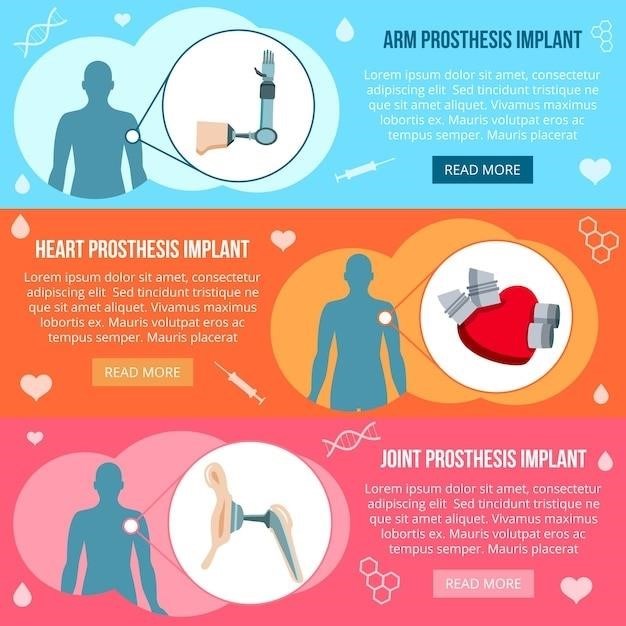Advanced Cardiovascular Life Support (ACLS) Provider Manual PDF⁚ Access and Content
The ACLS Provider Manual, crucial for training and certification, is available in both print and electronic formats from the AHA and third-party sources. PDF downloads are frequently offered, providing convenient access to the latest guidelines and algorithms. Multiple online retailers and educational platforms also offer the manual.
Availability of ACLS Provider Manuals in PDF Format
Accessing the Advanced Cardiovascular Life Support (ACLS) Provider Manual in PDF format is readily achievable through various avenues. The American Heart Association (AHA), the primary authority on ACLS, may offer a downloadable PDF version of their official manual directly from their website or through authorized online retailers. However, direct availability as a free PDF download from the AHA is not guaranteed and may depend on the specific edition and licensing agreements. Be aware of unofficial sources offering free downloads, as these may be outdated or inaccurate.
Third-party educational platforms and online bookstores frequently list the ACLS Provider Manual in PDF format, often as a component of a larger course package or as a standalone purchase. The price and availability will vary depending on the vendor and the specific edition of the manual. Carefully review the description and licensing terms before purchasing to ensure you are receiving the legitimate, most up-to-date version. Remember that using an outdated manual could negatively impact your ACLS certification efforts. Always verify the source’s legitimacy to avoid obtaining pirated or outdated materials;
Electronic vs. Print Versions of the ACLS Provider Manual
The choice between the electronic (PDF) and print versions of the ACLS Provider Manual depends largely on personal preference and learning style. The PDF version offers portability and ease of access; you can carry it on a tablet or laptop, search for specific terms, and easily adjust the text size. However, some learners find it more challenging to focus on electronic text, and extended screen time can cause eye strain. Furthermore, reliance on electronic devices can present issues during power outages or technical malfunctions.
Conversely, the print version provides a tactile learning experience that some find more conducive to concentration and retention. It eliminates distractions associated with electronic devices and allows for easy note-taking and highlighting directly within the text. However, printed manuals are less portable and require physical storage space. The cost may also be a factor, as print versions often have a higher upfront price than electronic versions. The best choice depends on your individual needs and learning preferences, and potential access to technology.
AHA’s Official ACLS Provider Manual⁚ eBook and Print
The American Heart Association (AHA) is the definitive source for ACLS training materials. Their official ACLS Provider Manual is available in both print and eBook formats, ensuring accessibility for a wide range of learners. The AHA’s eBook version provides the same comprehensive content as the print edition but in a digital format, often accessible through a dedicated AHA reader application. This digital version offers the convenience of portability and searchability, allowing for quick reference during study or clinical practice. Purchasing directly from the AHA guarantees you are receiving the most current, accurate, and officially sanctioned version of the manual. The print version, meanwhile, offers the traditional advantages of a physical textbook, such as ease of note-taking and the absence of screen-related distractions.
Both versions are regularly updated to reflect the latest advancements in resuscitation science and treatment guidelines, ensuring that healthcare providers receive the most up-to-date information available. This commitment to accuracy and timeliness makes the AHA’s official manual a crucial resource for anyone seeking ACLS certification or continuing education.
Third-Party Sources for ACLS Provider Manuals
While the American Heart Association (AHA) is the primary source for ACLS Provider Manuals, several third-party vendors and online platforms also offer access to the material. These sources may offer the manual in various formats, including PDF downloads, often at a lower cost than purchasing directly from the AHA. However, it’s crucial to exercise caution and verify the legitimacy and currency of the materials obtained from these sources. Ensure the provider is reputable and that the manual reflects the most up-to-date AHA guidelines. Outdated versions could contain inaccurate or obsolete information, jeopardizing the effectiveness of training and potentially impacting patient care. Always check the publication date and compare the content against information directly from the AHA website to confirm accuracy. Using unofficial sources might also risk encountering copyright infringement issues.
Before relying on a third-party provider, confirm their credentials and ensure the material is legally obtained and aligns with current AHA standards. Purchasing from reliable educational platforms or established medical publishers usually provides a safer alternative to less reputable online sources.

ACLS Manual Content and Structure
The ACLS Provider Manual provides a comprehensive guide to advanced cardiovascular life support, including algorithms, treatment guidelines, and case studies to aid in practical application and skill development.
Key Topics Covered in the ACLS Provider Manual
The ACLS Provider Manual delves into various critical aspects of advanced cardiovascular life support. Key areas covered include the recognition and management of cardiac arrest, encompassing effective CPR techniques and the strategic use of defibrillation. The manual also emphasizes advanced airway management strategies, addressing different airway challenges and securing a patent airway. Hemodynamic support, including the appropriate use of vasopressors and inotropes to stabilize circulatory function, is a significant component. Furthermore, the manual covers the management of various cardiac dysrhythmias, focusing on prompt recognition and appropriate treatment protocols. The importance of effective team dynamics and communication in high-pressure situations is also highlighted, ensuring efficient coordination during emergencies. Finally, post-cardiac arrest care is detailed, emphasizing the crucial steps to optimize patient recovery and long-term outcomes. This comprehensive approach equips healthcare professionals with the necessary knowledge and skills to handle critical cardiovascular emergencies effectively.
Algorithms and Treatment Guidelines in the ACLS Manual
The ACLS Provider Manual is structured around a series of algorithms that guide healthcare providers through the systematic assessment and treatment of various life-threatening cardiac conditions. These algorithms, presented visually as flowcharts, provide a step-by-step approach to decision-making during emergencies. They incorporate the latest scientific evidence and best practices to ensure optimal patient care. The algorithms cover a wide range of scenarios, including cardiac arrest, acute coronary syndromes, and various dysrhythmias. Each step in the algorithm is accompanied by detailed explanations and rationales, clarifying the underlying principles and supporting evidence. Treatment guidelines, meticulously detailed within the manual, offer specific recommendations on medication dosages, administration routes, and other interventions. This structured approach allows providers to efficiently manage time-critical situations, making informed decisions based on clear guidelines and evidence-based practices. Regular updates ensure the algorithms and guidelines remain current with the latest advancements in resuscitation science.
Case Studies and Practice Scenarios in the ACLS Manual
The ACLS Provider Manual effectively integrates numerous case studies and practice scenarios to solidify understanding and enhance practical application of the learned material. These realistic scenarios present complex clinical situations requiring critical thinking and decision-making skills. Each case study systematically guides the reader through the diagnostic process, highlighting key assessment findings and guiding the selection of appropriate interventions. The scenarios often include unexpected complications and variations in patient presentation, encouraging the development of adaptable problem-solving skills. Detailed explanations accompany each scenario, providing in-depth analysis of the rationale behind specific treatment choices. This interactive approach allows students to apply the algorithms and guidelines learned in a simulated environment, strengthening their ability to handle real-world emergency situations confidently and effectively. The inclusion of these case studies and practice scenarios makes the manual a highly effective learning tool.

Using the ACLS Provider Manual for Training and Certification
The ACLS Provider Manual serves as a comprehensive resource for pre-course preparation, post-course review, and ongoing clinical reference, supporting both initial certification and recertification processes.
Pre-Course Preparation Using the ACLS Manual
Effective utilization of the ACLS Provider Manual before the course significantly enhances learning outcomes. Reviewing key topics such as cardiac arrest algorithms, treatment guidelines for various arrhythmias, and the systematic approach to managing emergencies allows students to arrive well-prepared. Familiarizing oneself with the manual’s structure and organization facilitates efficient information retrieval during the course. Pre-course preparation using the manual minimizes information overload during the intensive training sessions, enabling a more focused and effective learning experience. This proactive approach allows for better comprehension and retention of complex medical concepts. Students who utilize the manual prior to the course consistently demonstrate a greater understanding and improved performance during practical assessments and simulations. Understanding the content beforehand ensures a smoother transition into advanced scenarios and enhances overall preparedness for certification. The time investment in pre-course preparation translates directly into improved competency and confidence during the ACLS course. By actively engaging with the manual before attending the course, students optimize their learning journey and increase their chances of successful certification. This preemptive study method is recommended for all aspiring ACLS providers.
Post-Course Review and Clinical Reference
The ACLS Provider Manual serves as an invaluable resource for post-course review and ongoing clinical reference. After completing the ACLS course, revisiting key concepts and algorithms within the manual solidifies learning and enhances long-term retention. The detailed explanations and illustrations within the manual help clarify any lingering questions or areas of uncertainty from the training. Furthermore, the manual functions as a practical guide for real-world clinical application. Healthcare professionals can quickly reference essential algorithms and treatment guidelines during emergency situations, ensuring efficient and effective patient care. The readily accessible information within the manual minimizes response times in critical moments, facilitating optimal patient outcomes. Regular review of the manual ensures that healthcare providers remain current with the latest resuscitation science and treatment protocols. The manual is a dynamic tool, helping maintain proficiency and confidence in managing complex cardiovascular emergencies. It’s a crucial component of ongoing professional development, ensuring that clinicians stay up-to-date with the evolving landscape of ACLS practices and guidelines. This sustained engagement with the manual is critical for maintaining the highest standards of patient care and contributing to improved survival rates in life-threatening cardiac events.
ACLS Certification and Recertification
Successful completion of the ACLS course, coupled with a thorough understanding of the material presented in the Provider Manual, is essential for obtaining initial certification. The manual’s comprehensive content directly supports the knowledge and skills assessed during the certification process. Regular review of the manual is instrumental in maintaining competency and preparing for recertification. The manual’s detailed algorithms and treatment guidelines are invaluable for refreshing knowledge and ensuring continued proficiency in managing complex cardiovascular emergencies. Recertification often involves demonstrating a firm grasp of the material presented in the manual, confirming that healthcare professionals can effectively apply the latest ACLS protocols. The manual’s role extends beyond simply preparing for exams; it serves as an ongoing resource for maintaining a high level of clinical expertise. Access to this updated information is critical for ensuring the delivery of high-quality, evidence-based care to patients experiencing life-threatening cardiovascular events. Consistent engagement with the manual’s content throughout the certification cycle contributes to improved patient outcomes and upholds the rigorous standards of ACLS certification.


